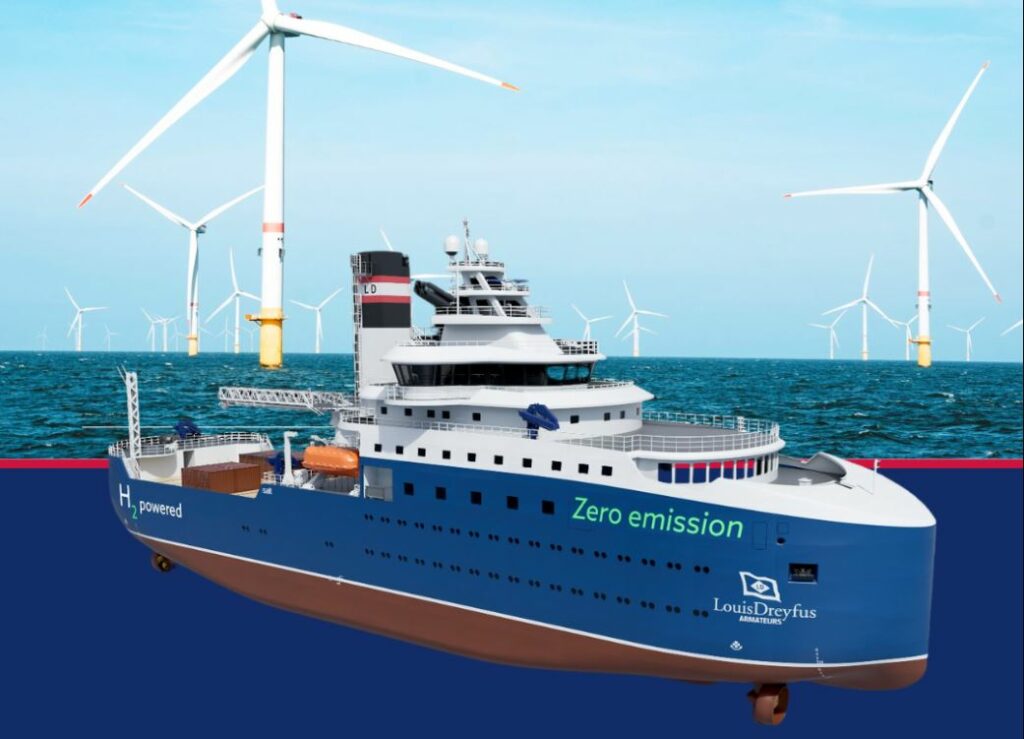Louis Dreyfus Armateurs (LDA), in partnership with Salt Ship Design, has embarked on the development of a liquid hydrogen Service Operation Vessel (SOV) concept, aiming to revolutionize the maritime industry’s approach to sustainability.
While this initiative marks a significant step forward in embracing hydrogen as a clean energy source, a critical examination of its implications is essential to understand its true impact and challenges.
The liquid hydrogen-based SOV, currently in the concept design phase, promises to operate with zero carbon emissions for 95% of its operational time. This ambitious goal aligns with the global shift towards decarbonization and renewable energy adoption, particularly in the offshore wind sector. By releasing only water during standard operations, the vessel seeks to mitigate approximately 4,000 tons of CO2 emissions annually, potentially setting a new standard for environmentally friendly maritime operations.
One of the key highlights of LDA’s liquid hydrogen SOV concept is its best-in-class operability footprint. With the capacity to accommodate up to 90 technicians onboard and endure 14 days at sea without additional offshore facilities or heavy port infrastructure, the vessel demonstrates impressive versatility and efficiency. These features not only enhance operational flexibility but also contribute to cost savings and logistical simplification, factors crucial for the widespread adoption of hydrogen-powered vessels.
While LDA’s initiative signifies a significant advancement in hydrogen propulsion technology, several challenges and considerations warrant attention. Firstly, the scalability and affordability of liquid hydrogen production and distribution infrastructure pose substantial hurdles. As the hydrogen economy continues to evolve, addressing these challenges will be imperative to ensure the widespread adoption of hydrogen-powered vessels.
Moreover, regulatory frameworks and safety standards surrounding hydrogen fuel storage and utilization demand meticulous attention. Ensuring compliance with rigorous safety protocols and securing necessary certifications will be essential to gain industry-wide acceptance and mitigate potential risks associated with hydrogen propulsion technology.
